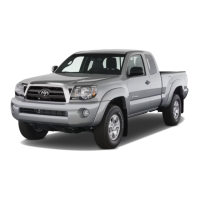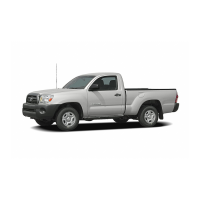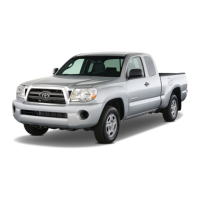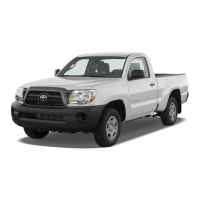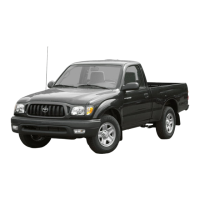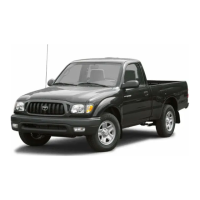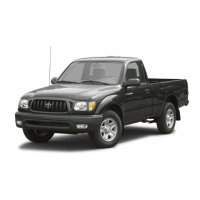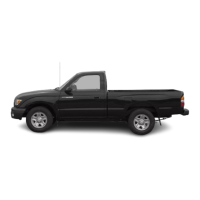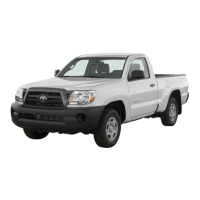55
2005 TACOMA from Mar. ’05 Prod. (OM35862U)
LS13117
The SRS (Supplemental Restraint Sys-
tem) front airbags are designed to pro-
vide further protection for the driver
and front passenger in addition to the
primary safety protection provided by
the seat belts.
Vehicles with separate seats—Your vehicle
is equipped with “ADVANCED AIRBAGS”
designed based on US motor vehicle safe-
ty standards (FMVSS208). The airbag sys-
tem controls airbag deployment power for
the driver and front passenger. The driver
airbag system consists of the driver seat’s
position sensor etc. The front passenger’s
airbag system consists of the front pas-
senger occupant classification sensor etc.
Vehicles with bench seat—The SRS air-
bags are designed to protect the driver
and right front passenger, and they are
not designed to protect an occupant in the
front center seating position.
In response to a severe frontal impact,
the SRS front airbags work together with
the seat belts to help reduce injury by
inflating. The SRS front airbags help re-
duce injuries mainly to the driver’s or front
passenger’s head or chest caused by hit-
ting the vehicle interior.
Vehicles with bench seat—The SRS front
passenger airbag is activated even with
no passenger in the front seat.
Vehicles with separate seats—The SRS
front passenger airbag will not activate if
there is no passenger sitting in the front
passenger seat. However, the front pas-
senger airbag may deploy if luggage is
put in the seat. (As for the front passen-
ger occupant classification system, see
“Front passenger occupant classification
system” on page 80 in this Section.)
Always wear your seat belt properly.
CAUTION
The SRS front airbag system is de-
signed only as a supplement to the
primary protection of the driver and
front passenger seat belt systems.
The driver and front passenger can
be killed or seriously injured by the
inflating airbags if they do not wear
the available seat belts properly.
During sudden braking just before
a collision, an unrestrained driver
or front passenger can move for-
ward into direct contact with or
close proximity to the airbag which
may then deploy during the colli-
sion. To ensure maximum protection
in an accident, the driver and all
passengers in the vehicle must
wear their seat belts properly. Wear-
ing a seat belt properly during an
accident reduces the chances of
death or serious injury or being
thrown out of the vehicle. For in-
structions and precautions concern-
ing the seat belt system, see “Seat
belts” on page 43 in this Section.
05 02.25
SRS driver airbag and front
passenger airbag (regular and
access cab models)
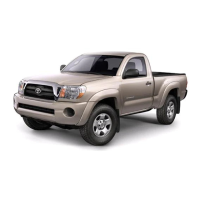
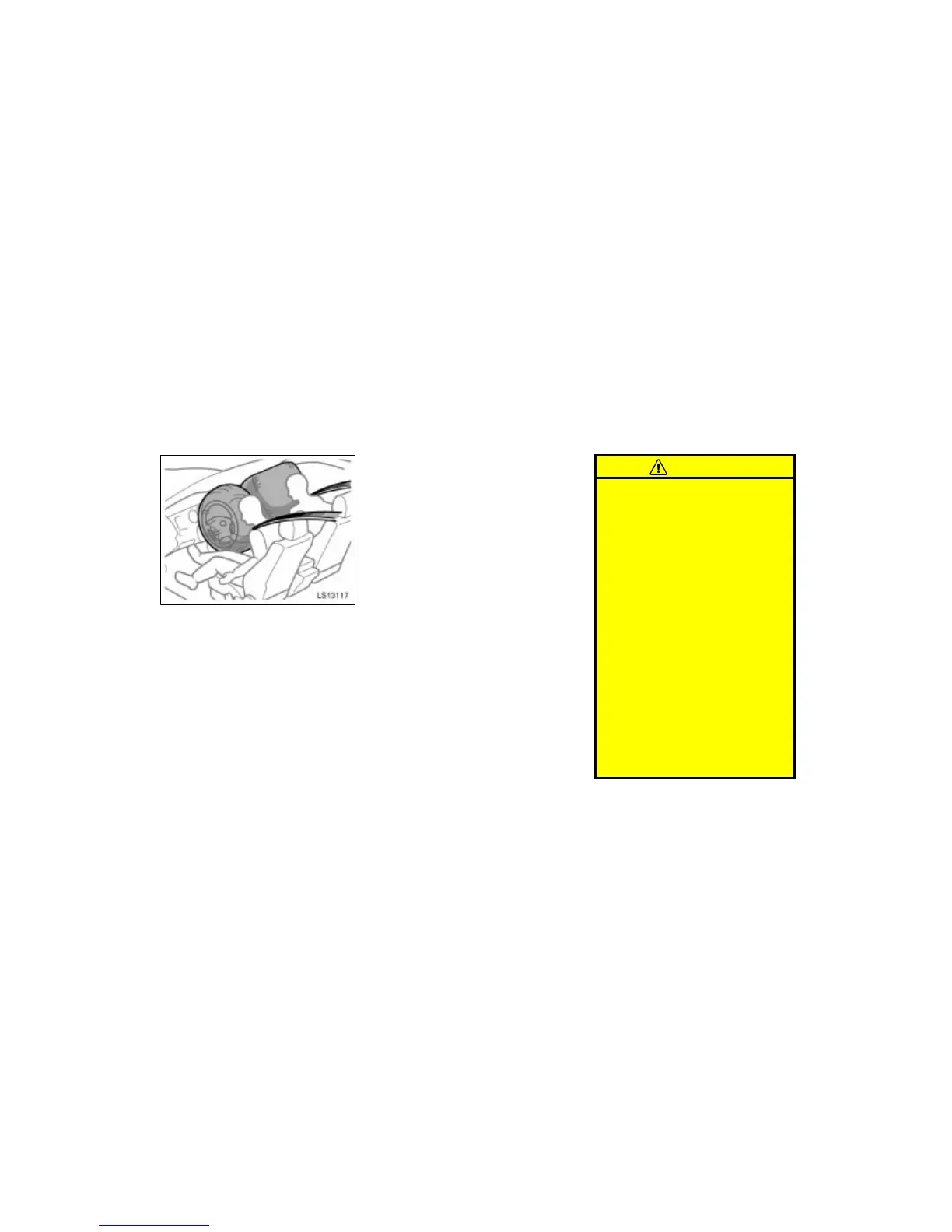